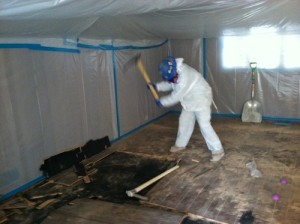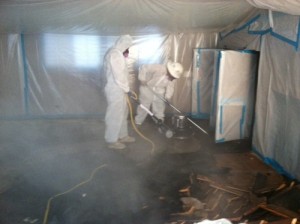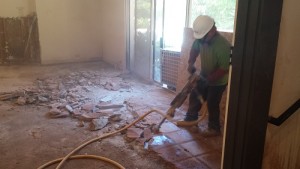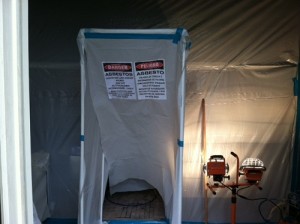Asbestos Removal Beverly Hills
Asbestos Removal Beverly Hills
This is a value add project that the current owner is providing an upfront cash layout for a future sale on the back end about a year after completion. This is a very sought after location north of Sunset behind the Beverly Hills Hotel.
Our scope was to selectively demolish the interior for the general contractor by removing the plaster from the walls, breaking concrete for the new utilities, install temporary shoring, and removing asbestos from the project. All abatement work was utilized by using class 1 workers, engineering controls and three chamber decon. The project is currently in progress and the final demolition by us will be completed in a final phase to be determined by the general contractor.
Why Is Asbestos Dangerous?
The use of asbestos throughout the United States has dropped dramatically in recent decades, but the threat of exposure to toxic asbestos fibers remains as real as ever today.
The danger has not subsided. Awareness is imperative.
Anyone involved in the renovation, remodeling or demolition of a residential or commercial structure built before the mid-1980s is at risk unless the proper precautions are taken.
Many common building materials through much of the 20th century contained asbestos. When those products eventually begin to deteriorate or if someone is drilling, sanding or somehow disturbing them, microscopic asbestos fibers can be released into the air, endangering anyone nearby.
Anyone living or working in an older structure also should be aware. No amount of asbestos exposure is considered safe.
Asbestos could be in the ceiling, floor tiles, wallboards, plumbing and electrical components. When disturbed for any reason, it can become dangerous.
Although asbestos is strictly regulated and used sparingly in new construction today, thousands of tons of asbestos remain in buildings, machinery and various other products throughout the country.
As dangerous as it is today, asbestos was once considered a valuable resource. It is a naturally occurring mineral that was coveted for its versatility, affordability and heat resistance. It could strengthen almost anything mixed with it. It was an insulator and a sound buffer.
Unfortunately, it also is toxic. The microscopic fibers can be easily and unknowingly inhaled or ingested. Although the immediate dangers may seem minimal, those fibers can become lodged in the thin membrane around the lungs or abdomen and slowly cause inflammation and eventually scarring.
Over time, the scarring can develop into a variety of serious health issues, including asbestosis, lung cancer and malignant mesothelioma. The latency period between exposure to asbestos and diagnosis of mesothelioma can be anywhere from 20-50 years.
An estimated 3,000 Americans are diagnosed annually with mesothelioma. Almost 10,000 people are diagnosed with some kind of asbestos-related disease annually in this country. Those numbers are not declining yet.
Success in fighting these diseases revolves around early detection when it is most treatable. If you suspect that you've been exposed to asbestos, talk to your physician about it. Insist on an X-ray, which can detect any abnormalities around the lungs.
The cancer has no cure, although there are curative therapies available if it is discovered early.
Mesothelioma, which typically comes with a grim prognosis, was once considered an occupational disease and often associated with the military. Exposure occurred in shipyards, manufacturing, power plants, constructions sites, and any number of places where asbestos parts were produced or used.
Today, the exposure occurs more in places where it has been in place for decades.
Firefighters, for example, are exposed to asbestos regularly when answering a call in an older building. Burning asbestos can produce a toxic combination. Because of that, firemen will wear a special breathing apparatus during a fire in an older building.
Construction workers should take similar precautions. In newer construction, roofing materials often still contain asbestos, which is designed to resist heat and prevent fires.
Asbestos fibers can be carried home on clothes worn at work, putting family members at risk of secondhand exposure.
If the asbestos materials are still in good condition and undisturbed, the products typically aren’t dangerous. Asbestos removal is the only permanent solution to the problem, yet it isn’t always necessary for the short term.
Asbestos materials sometimes can be isolated and repaired instead of removed. A small tear in asbestos pipe insulation, for example, can be repaired. It should be monitored for signs of damage or future deterioration.
The American Lung Association and the U.S. Environmental Protection Agency recommend hiring a certified asbestos professional to assess each job.






Comments are closed.